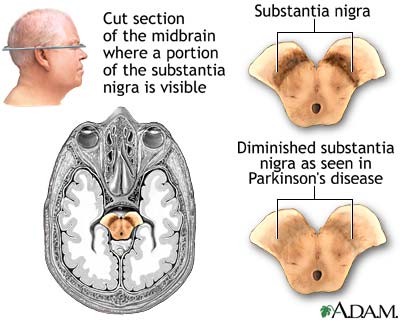
While stress can be a Parkinson’s disease contributor, it is highly unlikely that you are exhibiting a symptom of PD.
Panic attacks are quite real and they do require treatment. The tremors you experience are a common feature of tension, anxiety and panic attacks.umm.edu/ency/article/000924all.htm
While there are a few classes of medication which can treat this condition, it might be beneficial to begin by addressing the condition head-on. You should consider “cognitive behavioral therapy (working with a therapist)” before you begin to take medications, all of which can have some nasty side effects although these do not occur for many people.
To answer your question about symptoms onset of PD, the symptoms can begin as early as 2 years old. When it occurs from 2-20 years of age, that form of PD is known as Juvenile Parkinson’s and is considered to be genetic in origin. from 21-55 years or so, the condition is know as Early Onset or Young Onset PD (YOPD) and is considered to be primarily genetic in origin. The remainder is known as old Age or simply as Parkinson’s disease. please understand that as more is learned about the precursor symptoms, it may be that some of the mature-aging PD cases may be viewed as YOPD instead,
So, while you probably can remove PD as a worry stressor, you should consult a few sources about finding the best therapist to help you deal with your anxiety disorder.
I am reluctant to list all of the symptoms of PD here because there will be overlap between these symptoms and those of anxiety disorders. The dominnant symptoms are TRAP:Tremor (beginning as a resting tremor on on side only)Rigidity (or Stiffness)Akinesia (or Bradykinesia) slowed movementPostural Instability – a balance issue.
There are many other symptoms although not all occur in all PD patients nor do they necessarily occur in a specific sequence. these symptoms include but are not limited to sleep disorders, depression, leg drag, orthostatic hypotension, swallowing issues, vocal issues, microphagia (small-cramped handwriting) loss of sense of smell, vision issues, urinary problems, constipation, ED, changes in skin (oily or dry), cognitive issues. Remember that most of the motion symptoms occur on one side only (unilaterally) at the onset of the disease and do not develop bilaterally until a later stage.
It is very easy to read a list of symptoms and say, “oh I’ve got that” but if you look at many motion disorders, heart conditions and anxiety disorders, you will find similar symptoms. I think that in your case, it would be logical to begin with the anxiety disorder which you have already acknowledged. since it can be crippling, it is important to treat it now.